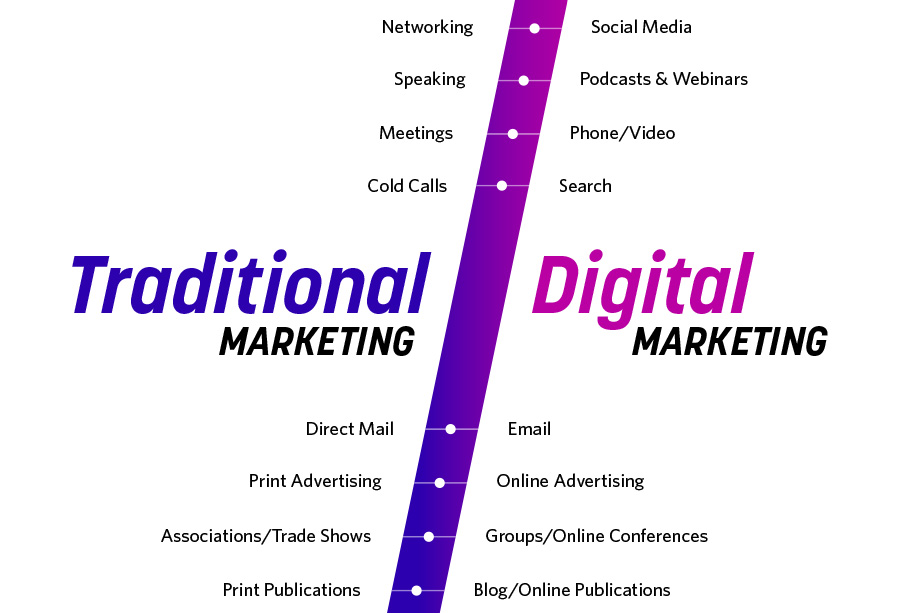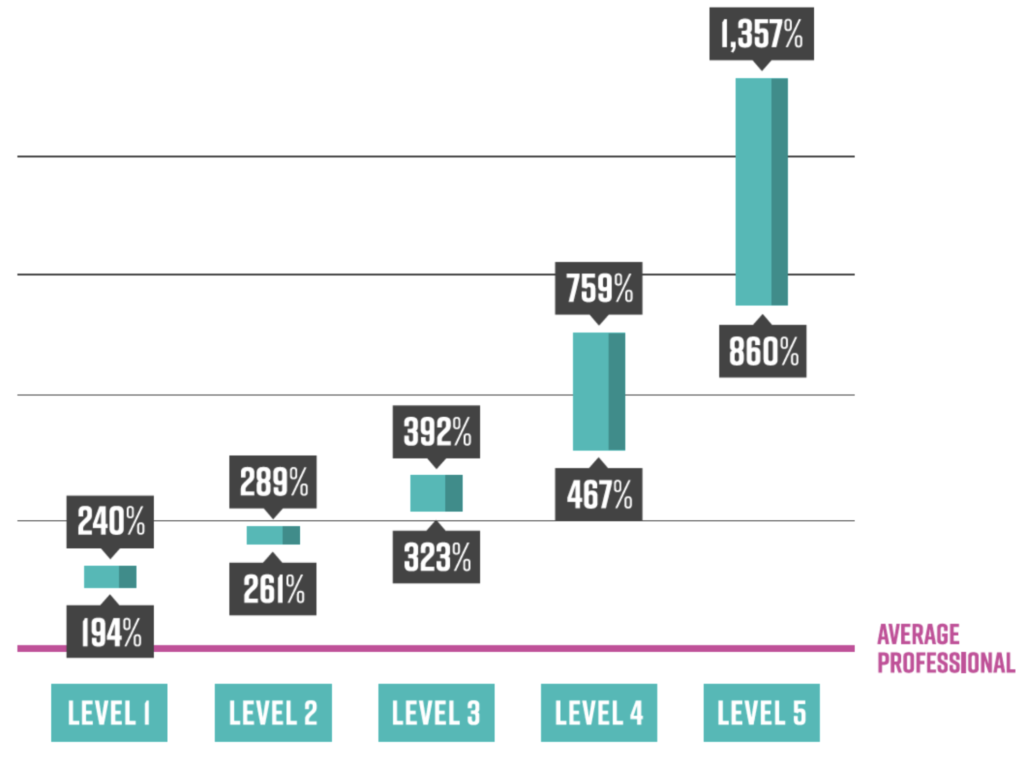Sometimes it seems that every subject matter expert aspires to be a thought leader. And why not? It seems like a great thing to be, like a “trusted advisor” or a “team player.”
But what does it actually mean to be a thought leader? How do you become one? Is it in fact a good marketing strategy for the professional services firm? The answers to these questions, and more, are what we will cover in this post.
Let’s start with an understanding of what thought leadership marketing actually is.
Thought Leadership Marketing Defined
Thought leadership marketing is the process of increasing the visibility of specialized expertise and accelerating market influence to accomplish marketing goals, such as building brand strength or generating new business. It is accomplished by creating insightful analysis and content and making that thought leadership visible to your target markets.
Thought leaders are individuals or firms recognized for their specialized expertise and their influence on the development of their discipline. They are both subject matter experts and influencers. They lead the thinking of their field of expertise.
Thought Leadership vs. Content Marketing
Thought leadership is often confused with content marketing. Content marketing is a much broader discipline. It involves using content to attract, educate and close new business. Thought leadership is a specific strategy within the broader concept of content marketing.
For example, a firm might publish helpful content that explains confusing terms and concepts without offering any innovative or advanced thinking. Another firm may offer entertaining or humorous content. Both of these are content marketing strategies, but neither would be considered thought leadership.
Thought Leadership Must Be Made Visible
Thought leadership involves more than expertise and an understanding of industry best practices.
It’s being the expert that brings a fresh, insightful perspective to a common problem or anticipates emerging trends. Often a thought leader’s perspective is at odds with conventional wisdom — even controversial. But a successful thought leader can turn that new insight into tomorrow’s best practice.
Now, having great insights is not enough. Those insights need to be widely visible if they are to become influential.
And this is where many potential thought leaders stumble. They have the expertise and the insight, but no one sees it. Think of it as invisible expertise.
Watch the On-Demand Webinar “Brand You: Build a Powerful Personal Brand in Any Economy”
Five Levels of Visibility
Our research has been able to identify five distinct levels of visible thought leadership. Each level has increasing levels of influence and impact.
Level 1: The Resident Experts
Recognized as an expert by clients, staff and colleagues that work directly with the thought leader, these individuals are not well known outside of their firm. External influence is minimal.
Level 2: The Local Heroes
Known in their local market or small industry niche, these individual experts’ reputations have moved beyond the boundaries of their firms. Occasionally they attract new business based on their thought leadership.
Level 3: The Rising Stars
These individuals’ reputations are moving onto a regional stage. They are becoming more widely known as influencers and are attracting new business and commanding higher fees. Influence is growing.
Level 4: The Industry Rock Stars
These are the nationally recognized names within their industries. They are influential thought leaders, and they draw top-tier opportunities to their firm. They are sought out as keynote speakers at major industry events and are often quoted in the press.
Level 5: The Global Superstars
These individuals’ visibility and reputation for thought leadership have developed beyond their niche and industry. Their influence extends to many industries and, in some cases, to the general public. Business flows to their firms, and major brands clamor to be associated with them. Their opinions can influence societies as a whole.
How to Develop Your Thought Leadership Strategy
Developing your though leadership strategy is the best place to start. If you get the strategy right everything else is easier. Without a strategy you are likely to be unfocused and much less effective.
Here are five steps to get you started.
Define Your Target
Who are you trying to reach? Is it a certain industry? A specific corporate role such as the CEO or CFO? Referral sources as well as target clients?
Once you’ve identified your audience a lot of other specifics start to fall into place. But a word of caution is in order. Don’t be overly broad in your targeting. The narrower and more specific you can be, the faster you will progress. Focus drives faster progress.
Research Your Target
Pay special attention to your target audience’s business challenges, important issues and concerns. These will ultimately influence how you position your expertise and what issues you focus on in your thought leadership content.
There are a variety of research methods and strategies you can use to collect your information. Don’t rely on your “gut instinct” or anecdotal evidence. The stronger your research, the more confidence you will have in your strategy.
Specify Your Areas of Expertise
You can’t be an expert in everything. Instead, try to focus your area of expertise on as small a niche as is economically viable. As with your target market, the narrower your niche the faster you can growth.
Look for an area where your natural interest and important priorities of your target market overlap. You become a thought leader by offering insights into an area your target audience cares about.
Develop Your Content Strategy
What will you write and speak about? What is your unique angle or insight that makes it thought provoking or practical? Your content needs to be valuable enough for people to use and recommend it.
How do you develop such valuable content? We’ll explore that in the next section.
Develop Your Visibility Strategy
How will you make your valuable content visible to your target audience? This question can be partially answered by the research you conducted earlier. Where does your target audience turn for new ideas and inspiration? What publications do they read? What blogs do they follow? Who do they already turn to as thought leaders?
Each answer provides a possible channel to reach your target audience. Speak at a conference they attend. Publish articles in trade publications. Establish relationships with existing experts in related fields. The section below called How to Make Your Thought Leadership Visible should give you further ideas. Another valuable resource is our book on becoming a Visible Expert®.
When you have documented your thought leadership strategy you are in a position to create insightful thought-leading content.
What Is Thought Leadership Content and How Do You Develop It?
Thought leadership content can take many forms. The most common are blog posts. In fact, they provide the foundation for most thought leadership strategies. But most Visible Experts develop many other types of content, too, from webinars, videos and speeches to executive guides and white papers.
How do you develop the insights and content that moves a field forward? While there is no formula that can guarantee you will become an insightful, influential thinking, there are meaningful steps you can take to take your expertise to the next level. Deeper, more relevant insights make better thought leadership content.
Narrow Your Focus
Our research on high-profile experts shows that narrowing your focus greatly increases the likelihood of deepening your expertise. The narrower your focus, the faster your ascent to leadership.
The reason is pretty simple. Going narrower almost always allows you to accumulate experience and insight faster. That accelerates the process and improves the impact of your content.
Do Original Research
Conducting original research on a topic gives you a huge advantage. High-quality research supplies new insights that you can be apply to clients’ challenges and share with your readers and listeners. It is one of the key paths to thought leadership. New research findings make exceptional raw material for thought leadership content.
Take a Contrarian Perspective
A fresh perspective is another hallmark of thought leader level thinking. Perhaps it’s taking a client’s perspective on a challenge when everyone else is viewing it through his or her own lens. Or when everyone is headed in one direction, you explore the opposite view.
A contrarian perspective doesn’t mean being quarrelsome or negative. It means looking at a problem from a novel angle.
Mash Up Your Expertise
Sometimes great insight comes from applying the methods and thinking from one discipline to another: putting two seemingly unrelated fields of expertise together. For example, what happens when you apply design thinking to accounting services? The result may be a novel insight that influences the thinking of others.
Interact With Other Experts
Having a good working relationship with other experts helps you in a couple of important ways:
First, it gives you access to the most advanced and influential thinking. Ture thought leaders talk with each other. They help each other get smarter—which helps you develop more insightful content.
Second, your colleagues become your amplifiers. They add credibility to you through their association with you. You are a part of a “club” of influential experts, and they will often share your latest thinking or refer new business to you.
Watch the On-Demand Webinar “Brand You: Build a Powerful Personal Brand in Any Economy”
How to Make Thought Leadership Visible
The challenge with expertise in general and thought leadership in particular is that they are invisible. You can’t tell a thought leader by how they look.
Nor does declaring yourself a thought leader make you one. It could just as easily backfire.
Instead, thought leadership must be demonstrated. Generally this happens in one of three ways:
Direct Interaction and Networking
This approach involves working with people directly, perhaps as a client or coworker — interacting with colleagues in meetings, in educational settings or at conferences. The interaction, however, must allow you to demonstrate your expertise.
Making the rounds at a cocktail party or networking event probably won’t cut it. The interaction needs to be substantive enough that people can experience your command of the material. Think of it as an expertise appetizer.
Writing
Writing the definitive best-selling book on a topic is the gold standard of thought leadership. But if a book sounds overwhelming, there are other ways that you can convey your expertise through writing. Articles in trade publications, blog posts, white papers and executive guides can also communicate your insights and build your reputation.
Of course, not all writing builds thought leadership. As a matter of fact, if done carelessly, it can easily reveal a real lack of leadership.
Speaking
Public speaking is another good way to demonstrate thought leadership. Standing behind a podium has the advantage of positioning you as an expert. For many experts, speaking engagements are their single best source of new business leads.
Live speaking events are also a great way to meet new people and get fresh input. Sometimes audience questions can be a source of new insights and inspiration.
Sharing Your Thought Leadership
How do you spread the word about your thought-leading content? There are a wide variety of techniques you can use to share your insights. A good cross section of the most popular techniques is shown in the figure below.

Notice this approach balances traditional offline techniques, such as networking and speaking engagements, and their digital counterparts, such as social media and webinars. Interestingly, for each offline technique there is a corresponding online technique.
The most successful firms understand where their potential clients look for thought leadership and make their content visible in those channels.
How Your Firm Benefits From Thought Leadership Marketing
Thought leadership not only benefits the subject matter expert, but also the professional services firm they are associated with. Many of these are intuitive, but our research study on high-visibility experts has documented them in some detail.
Faster Growth
Thought leaders’ single biggest impact is their ability to drive firm growth. Highly visible thought leadership attracts clients who want or need greater expertise. The leads are more qualified and easier to generate. Prospects close more quickly with less effort and greater success.
Higher Billing Rates
There is a direct relationship between the visibility of a subject matter expert’s thought leadership and the billing rate that expert is able to charge. This relationship is shown below.

A Stronger Brand
If you can combine thought leadership with greater visibility, your brand will become significantly stronger. That brand not only drives growth and profitability, it also creates a more valuable firm.
And when you make thought leadership one of your primary marketing strategies, you create a strong differentiator (specialized expertise) and a powerful strategic focus.
Attract the Best Talent
The best people want to work with industry leaders. Thought leadership is a great way to demonstrate the quality of your firm and attract employees who themselves want to become thought leaders. In a time when top talent is in high demand, thought leadership is a potent recruiting tool.
The Best Opportunities Come to You
Leading subject matter experts not only attract the best new clients and the most talented people, they also yield the best strategic partners and business relationships. When other organizations look to an industry for potential partners they look first for thought leaders.
Leading brands tend to want to work with other leading brands. High visibility experts report that they have their pick of teaming relationships, marketing partnerships and other strategic business opportunities. Thought leadership marketing not only helps you get ahead, it also makes it easier to stay ahead.
How Hinge Can Help
Want to become an industry thought leader? It’s one of our specialties. Hinge’s Visible Expert® Program provides all the guidance and help you need to implement a thought leadership platform that builds your reputation and visibility in the marketplace.
Additional Resources
- Find out how to become a sought-after expert in your industry. Get copy of our latest book The Visible Expert Revolution.
- Read the research study that started it all: Visible Experts®: How High Visibility Expertise Helps Professionals, Their Firms, and Their Clients.






